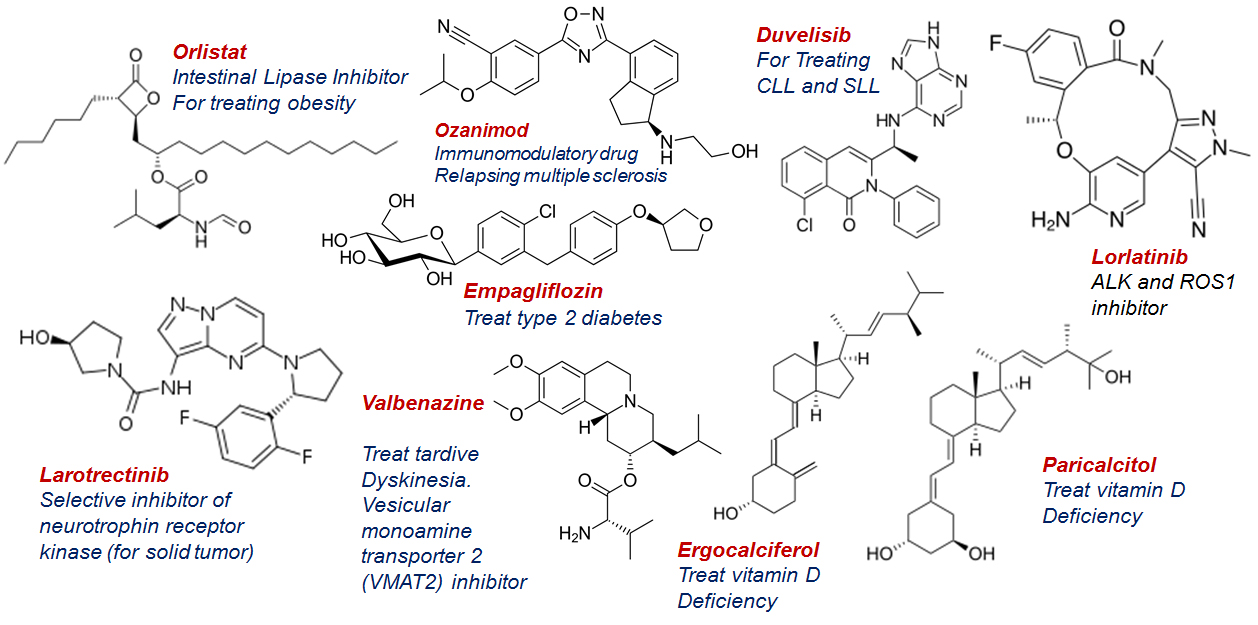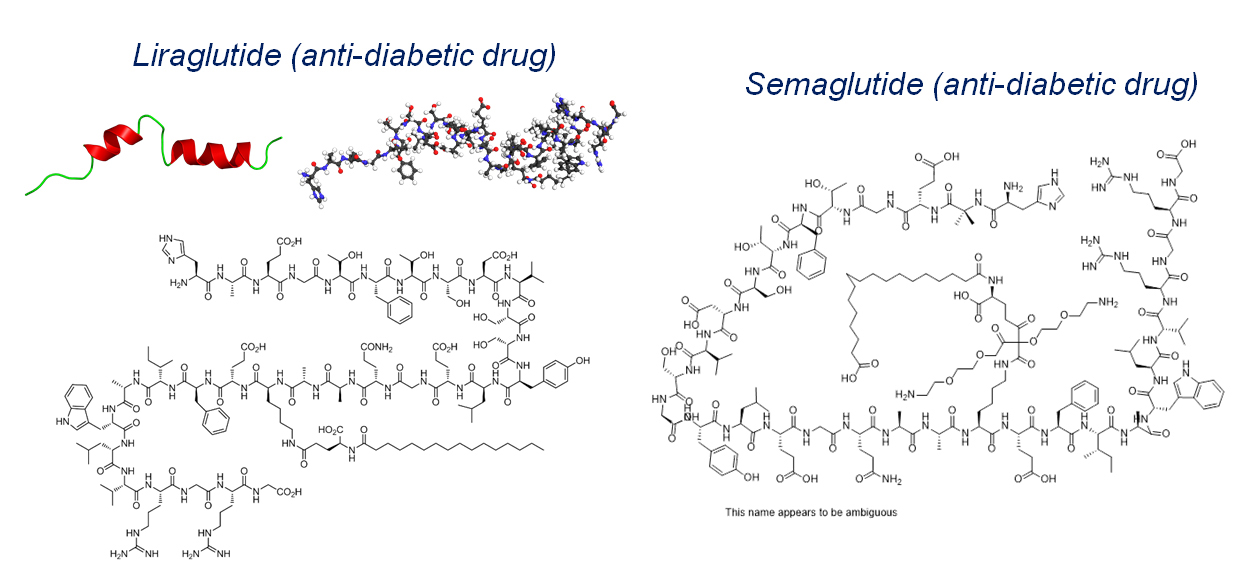Building a natural product-inspired macrocyclic toolbox for challenging “undruggable” targets.
The early days of drug discovery (pre-genomic days) that were normally focused on finding small molecule inhibitors of various enzymes, such as, kinases and phosphatases; in most cases, these studies were devoid of taking into the account of "complex human biology". While developing the strategies to finding novel inhibitors as the drug candidates, the computational biology (involving structural-guided synthesis designs) and in general, the Lipinski's rules were taking the driving seat. Following our acceptance that proteins, generally, do not function in isolation and rather belong to complex protein-machinery, in inducing the biological signals brought a new twist to our thinking (post-genomic era). In recent years, the late-stage failure of several high-powered drug candidates (for example, with neurological disorders), is haunting us again, reminding the complex and dynamic functions of human biology. In recent years, interest has grown in developing a deeper understanding of signaling pathways that are clinically-relevant and central to key cellular functions because their deregulation leads to various biological disorders. It is also well-accepted that these pathways are dynamic and temporal in nature and involve multiple, complex protein-protein interactions (PPIs). By contrast to handling isolated biological targets focusing on enzymes (typically having well-defined deep pockets as the functional sites), our classical approaches to assessing small molecules (i.e. compounds that are flat and rich in sp2 character), generally lack the features that are required to modulating such interactions. Developing newer drug discovery approaches require building new, integrated research models with different skill-sets, such as, patient-derived biology/biotechnology, signaling pathway-based cell biology, biophysics, genomics (including single cell genomic)/proteomics/CRISPR-Cas9, and finally, not the least, modern translational organic synthesis.
Over the years, natural products with functionalized polycyclic and macrocyclic rings have demonstrated a proven track record as small molecule modulators to protein-protein interactions. Due to the complex 3D architectures, the difficulty to access them in sufficient quantities, and to obtain the structural analogs in a reasonable time scale, often natural products present challenges to be taken further as drug candidates. This led to develop novel diversity-oriented synthesis methods that allow a rapid synthesis of natural product-inspired scaffolds with functionalized polycyclic and marocyclic rings. These scaffolds have the features or the substructures of bioactive natural products (3D architectures, dense array of chiral functional groups). Moreover, the developed methods are highly practical in nature, allowing a rapid access to structural analogs in time efficient manner.
SignMod’s small molecule synthesis platform provides several attractive features, and these include:
- Natural product-inspired 3-dimensional architectures
- Functional groups presented in a stereochemical diverse manner
- Skeletally diverse architectures (modular approaches to obtain different scaffolds)
- Scaffolds could be easily subjected to further decoration to yield diversity
- Easy to develop medicinal chemistry programs
- Stereocontrolled synthesis methods are practical in nature and could be easily adapted to process research
- Synthesis not too demanding on the time scale (a few months period for the repeat synthesis on several hundred milligrams scale)
Macrocyclic natural products have a proven track record to function as modulators of signaling pathways and protein-protein interactions. Due to the challenges in accessing these compounds in sufficient quantities and in a reasonable time, they have shown a limited scope in the drug discovery arena.
Macrocyclic compounds offer several attractions in a search of chemical modulators of protein-protein interactions. Some of these include:
- pre-organization
- numerous binding interaction options
- enhanced cell-permeation properties compared to their linear derivatives
- ability to map a large surface area
- ability to display chiral functional groups in different directions
Also see the attached presentation.
Integrated Drug Discovery: Collaborative or Fee for Service Opportunities
Our core leadership is a unique combination of deep expertise in Academia and Pharma Sector (US, Canada and India). Our diverse range of experience related to modern organic synthesis, medicinal chemistry, cell biology (in particular, Cancer and Neurological Disorders) and pharmacology is our strong asset. Shown below are some of the specific directions that we would consider building a path with/for others:
- To develop the drug discovery path from “hit to lead” and finally, taking the program to the IND stage.
- To undertake all level toxicity/DMPK/other cell-based and in-vivo relevant studies on hits/leads.
- In case, the already discovered “hits” are not IP attractive, SignMod will refine them to build a novel IP path for going forward.
- In case, small molecule hits are not available, SignMod will also develop a screening program for the discovery of novel hits (from our IP-based chemical toolbox).
- In case, the biological target is not known for a given hit/lead (resulting from the phenotypic studies), SignMod will develop a chemical biology approach seeking information on the target.
- Our preferred disease areas are Oncology, Neurological Disorders, Metabolic Disorders and Infectious Diseases.
APIs / Drugs and Complex Generics:
Visibly Different Chemistry!
- We are looking at chemistry with a new angle: Modern organic synthesis for a wide variety of complex and challenging chemical entities including APIs, drug candidates and various small molecules related to medicinal chemistry.
- Development of non-infringement synthesis methods that could lead to building the IP portfolio
While Being Conscious About the Word ‘Green’
- Development of large-scale, efficient process chemistry (range could vary from few gms to several kgs)
- Development of novel synthesis methods that utilize eco-friendly and cost-effective approaches pursuing “Green Chemistry” as the fundamental need wherever feasible.
Yet Delivering on Science to Propel Business
- Multi-steps synthesis, synthesis including stereo- and enantioselective synthesis.
- Peptide and glycopeptide synthesis; Natural product synthesis; Carbohydrate and Heterocyclic synthesis
- Analytical chemistry for determining chemical structures and the purity of various chemical entities obtained after the synthesis
Selected APIs / Drugs That We Are Currently Working On:

Selected APIs / Drugs That We Are Currently Working On (Contd.):

